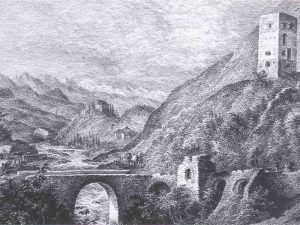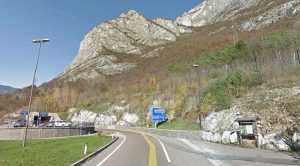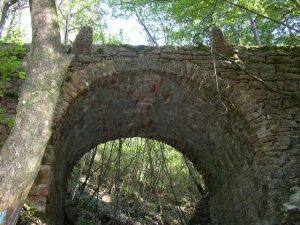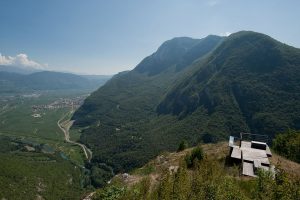Just above the village of Vigo di Ton, from the road leading to the sports ground, turning right, there is a forest road that crosses the gorge of Rinassico stream.
description
After crossing a valley with an ancient bridge in stone and lined by the Maso della Pozza, you reach the fork of the forest road rising from the Masi of Vigo (approximate distance 600m).
Keeping uphill, you will walk through the comfortable cart road that – in a slight slope – reaches a panoramic promontory with a picnic area. From here, through a short trail, you descend into the underpass (where the C.A.I. that comes from the Rocchetta resort arrives), which leads you to climbing to the top of the hill where the few remains of a medieval castle mentioned for the first time in 1199.
From the promontory and from the two panoramic terraces, there is a vast panorama of the Valle di Non and the Piana Rotaliana.
Torre di visione

At the top of a rock spur, upstream of the Rocchetta gorge, you can notice some square stones and other remains of walls of an ancient medieval tower called Visione. You get there, starting from Masi di Vigo to the church of the saints Fabiano and Sebastiano, following a trail through the woods. From here you can enjoy a splendid view of the Val d’Adige and Val di Non. It was built at the beginning of the 13th century by Albertino and Manfredino Thun and Luto di Marostica – invested in 1199 of the “Dosso delle Visioni” to build a castle, in the Eighties of the 13th century to Mainardo II, Count of Tyrol. For almost a century he was under the control of Tyrolean captains before being infused with Thun. At the beginning of the fifteenth century it was conquered by Pietro Spaur on behalf of the Duke of Austria, but shortly thereafter it was returned to the bishop of Trento, who again handed it over to Thun. Already in the early seventeenth century, as evidenced by a design of the Brandis Code, the tower stood, controlled by Rocchetta’s duty until the middle of the nineteenth century. Private property.
 Torre di visione
Torre di visione

